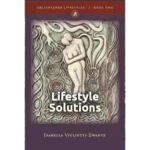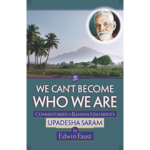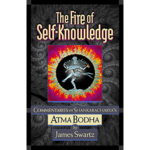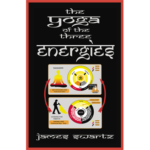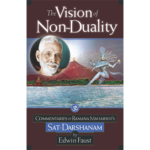Chapter I
Chapters 1&2 are savanna and manana
Verses 1&2 set up the context for claiming “I am Awareness.”
30 Minutes savanna, 30 minutes manana.
1. The disciple asked: By whose will is the mind directed to its objects? By whose command does the life breath do its duty? Who causes the eyes to see and the ears to hear? Who speaks through the mouth?
What are the Qualifications? Knowing the body is intelligent and that the world and body are the same material (non-duality) Separating Sentiency from the Body -By Whom indicates sentiency Only a subtle mind can claim.
Mantra 2 metaphorically reveals the uniqueness of the Self. Known objects do not need to be explained with metaphors. They can be accurately described. But the Self can’t be described because it is not an object. Because reality includes unknown as well as known factors how can we describe everything that is?
2. The teacher replied: It is the Eye of the Eye, the Mind of the mind, the Speech of speech, the Life of life, and the Ear of the Ear. Separating the Self from the senses and renouncing the world, the wise one realizes its immortal nature.
Inquiry is Discrimination – Separating and Claiming
If I’m asking, “Who am I” I’m never going to know the answer. Or if the answer inexplicably manifests, I will be unable to understand it for want of context. Inquiry is hearing the teaching, accepting what it reveals as knowledge and discriminating the Self from the objects that present themselves to it.
Applying the Opposite Thought
The five features of the Consciousness Principle are opposite the five features of the material principle. It is not an object of experience, non-material, attributeless, unchanging, always present and readily available. Maya hides It (avidya) and focuses attention on matter (viparaya) so there is confusion. Am I a material being or a non-material (spiritual) being?
In this verse the intimate subjective instruments, the senses and mind, are presented as the material principle too. This causes a problem because, although they are insentient, we think they are sentient i.e. the consciousness principle. How can an insentient object think it is a conscious subject? The inquirer has concluded that they must be borrowing sentiency from something else.
Reflected Awareness – Objectification of the secondary observer is Non-Identification with the Material Principle
We can’t understand the Self because hearing about it creates a desire to experience it, since it is tantamount to freedom and non-dual love. You hear about CBD oil and you want to experience it. But experience doesn’t work for the Self because it is already experienced. So we have to use logic. If we say “You are the ever-full blissful consciousness right now” it contradicts my experience of myself.
Understanding without Objectifying
So we call it the eye of the etc., which means that we want you to understand it without objectifying it! Which is to say, you need to non-identify with objects. Only identification brings an object into existence. Where is your X when you are thinking of Y? We only identify with objects because we think they are real.
What is Reality? Reality is the unborn essence of everything that never changes. It is existence/Consciousness. It is all there is.
If you understand the Five Features of Consciousness you can claim it with the mind if you exclude the body and mind! The mind, which can’t claim it because it is insentient, must claim it, because it inexplicably “thinks” it is the conscious subject.
The Benefit of Claiming “I am Consciousness” is objectification of the body-mind-sense complex.
Claiming involves knowledge of God (saguna brahman). It is dropping ownership, doership and controllership which produces a satisfied uncomplaining mind. An iceberg (jiva) melts into the ocean of existence/consciousness. It results in a disciplined non-dual mind.
Claiming removes the “I and mine” concept, which neutralizes my likes and dislikes and brings peace. It eliminates the selfish principle which creates bondage to action.
Summary: Vedanta provides the unarguable logic that allows me to claim “I am whole and complete actionless Awareness” without including the body and mind. The body-mind-sense complex is just a costume.
Hour 2 30 minutes listening, 30 minutes Q&A
3,4 . The eye does not go out on its own, nor the speech or the mind. We do not know the Awareness behind them. We do not know how anyone can teach It. It is different from the known and above the unknown. Thus we have heard from the preceptors of old who taught It to us.
Nobody knows a means whereby the Self can be known with the instruments of knowledge available to us. So how can it be taught? You can talk about it but talking about it doesn’t reveal it. It only adds another concept about it to the intellect. Fortunately, an indirect method—reasoning—works.
If it is different from known and unknown objects, it has to be the subject, awareness. No other option is available because it is the experience of everyone that experience is a transaction between an apparently conscious subject and seemingly real objects.
The Fundamental Fact of Experience – The Subject is Never an Object
With the tip of the finger you can touch anything except the tip of the finger. With a hand you can wash the whole body except the hand that’s washing. The eyes can’t see themselves. Freedom is the intellect claiming I am awareness without including the body and mind. You need to use the mind to claim your eternal identity, not to chase experiences.
But claiming without understanding this teaching is enlightenment sickness and makes me a fraud. I need to hide in spiritual clothing to conceal the fact that I don’t know what I am because claiming means disowning the claimant as myself. If I’m not the claimant, how could I claim? Every experience in my life has reinforced the belief that I am the claimant, a doer/enjoyer, so we are all susceptible to premature claims of enlightenment.
5. That which cannot be expressed by speech but by which speech is expressed…know that alone to be limitless Awareness and not that which people worship here.
6. That which cannot be known by the mind but by which the mind is known…know that alone to be limitless Awareness and not that which people worship here.
7. That which cannot be seen by the eye but by which the eye is seen…know that alone to be limitless Awareness and not that which people worship here.
8. That which cannot be heard by the ear but by which sounds are known…know that alone to be limitless Awareness and not that which people worship here.
9. That which cannot be expressed by smelled by the nose but by which the nose smells…know that alone to be limitless Awareness and not that which people worship here.



